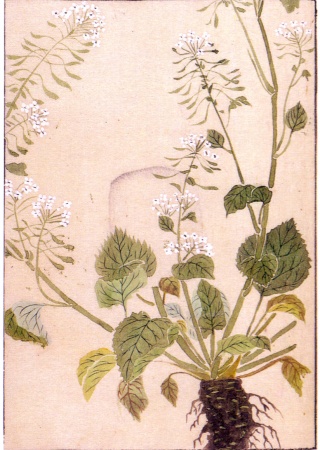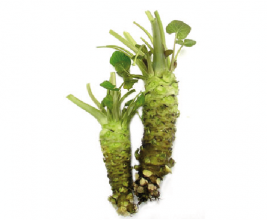Wasabi
- …wasabi contains substances that thin the blood and have beneficial effects during treatment of stomach cancer?
- …wasabi is traditionally made on a grater made of sharkskin?
- …dried wasabi powder from the lower part of the stalk, is much stronger?
- …wasabi is often served with sushi and sashimi (raw fish), but is also good with cooked meat and fish?
- …wasabi in the wild grows near the banks of Japanese mountain rivers, is grown in fields, or in fields flooded with water, like rice, and here the plant has the largest root?
- …wasabi is an ingredient in many toothpastes, because it halts the growth of bacteria in the mouth, and primarily for its ability to whiten teeth?
- …fresh wasabi is rich in vitamin C, vitamin B6 (pyridoxine), magnesium and calcium?
- …wasabi limits the growth of cancer cells and has anti-asthmatic effects?
- …wasabi only grows 3 centimeters per year?
- …wasabi as a spice consists of the dried and ground stalks of the Wasabia japonica plant?
Peanuts or almonds in green wasabi crust
1 egg white
1 tablespoon water
500 g peeled almonds or unsalted peanuts
2 tablespoons wasabi powder
2 tablespoons salt
2 tablespoons cornstarch
pinch sugar
Beat egg white with water into a froth and gradually coat peanuts of almonds. Allow to drip on a mesh. In a bowl, mix wasabi powder with salt and sugar, add cornstarch and load mixture into a plastic bag. Shake bag to coat nuts. Pour coated nuts onto a baking sheet lined with foil and bake in oven for 30 minutes at 150°C. Stir carefully while baking. Lower temperature to 100°C and bake for about 20 minutes. Serve cooled.
The Wasabia japonica plant, called the mountain holly wine, grows only in Japan on muddy banks of cool mountain rivers. It has been known and cultivated since approximately the 10th century. The plant is also known as Japanese horseradish, probably for it edible root, sharp aroma and biting, cleansing taste, however, it is not related to true European horseradish. In Japan, the brownish-green root is peeled and the light green pulp is finely grated. It is a side dish to most raw fish dishes. Portions of sashimi are normally sprinkled with grated wasabi or served with wasabi paste, which is mixed with soy sauce. Wasabi paste with rice and fish also goes with sushi.


